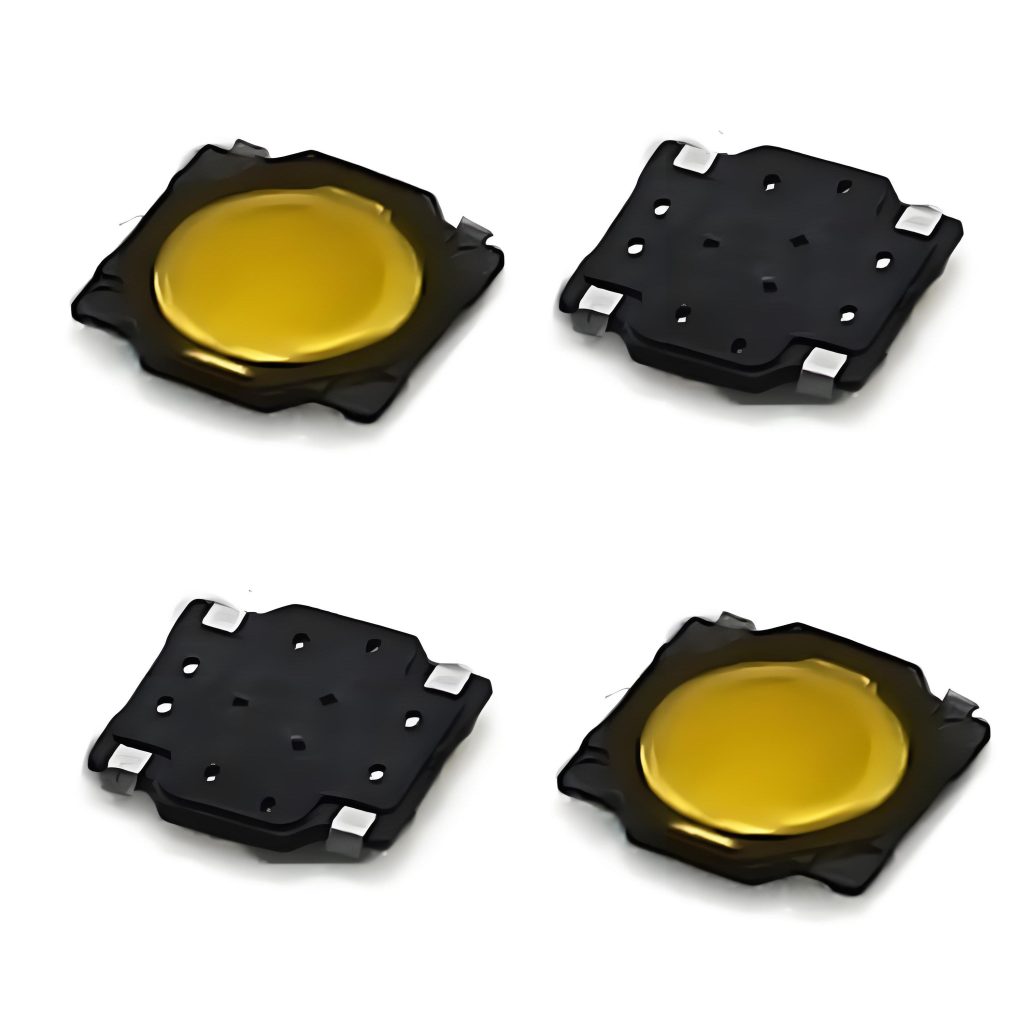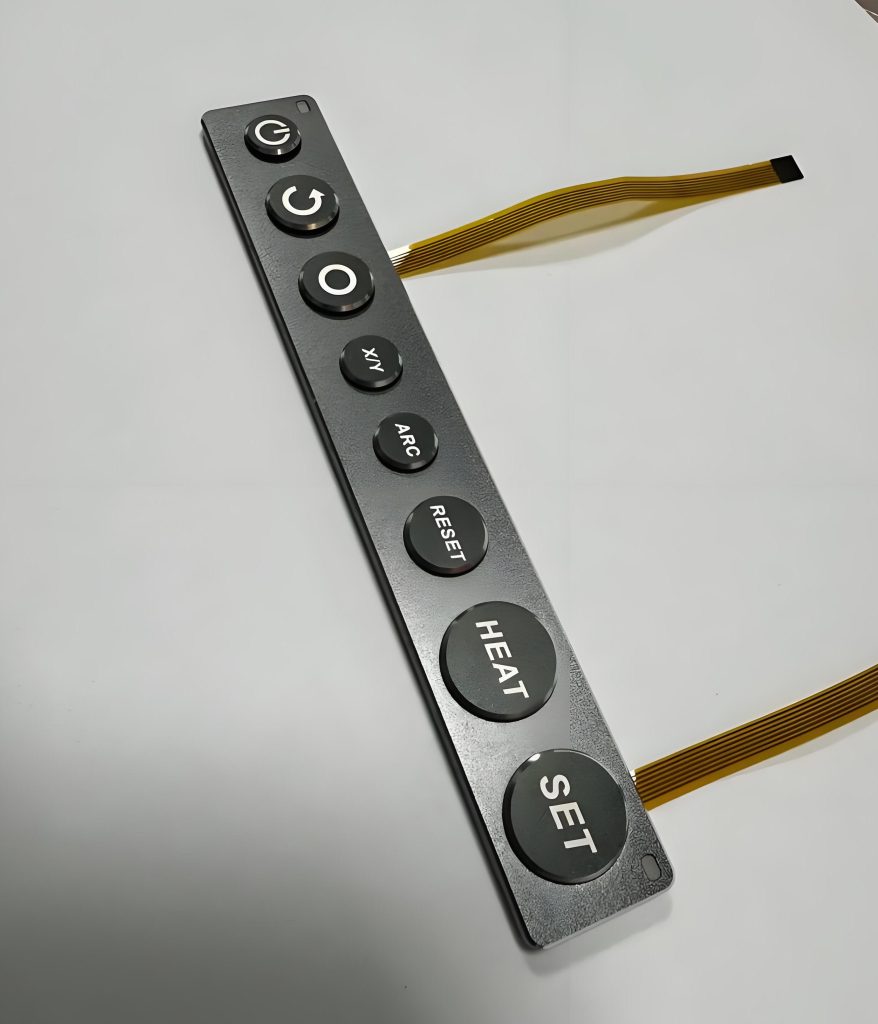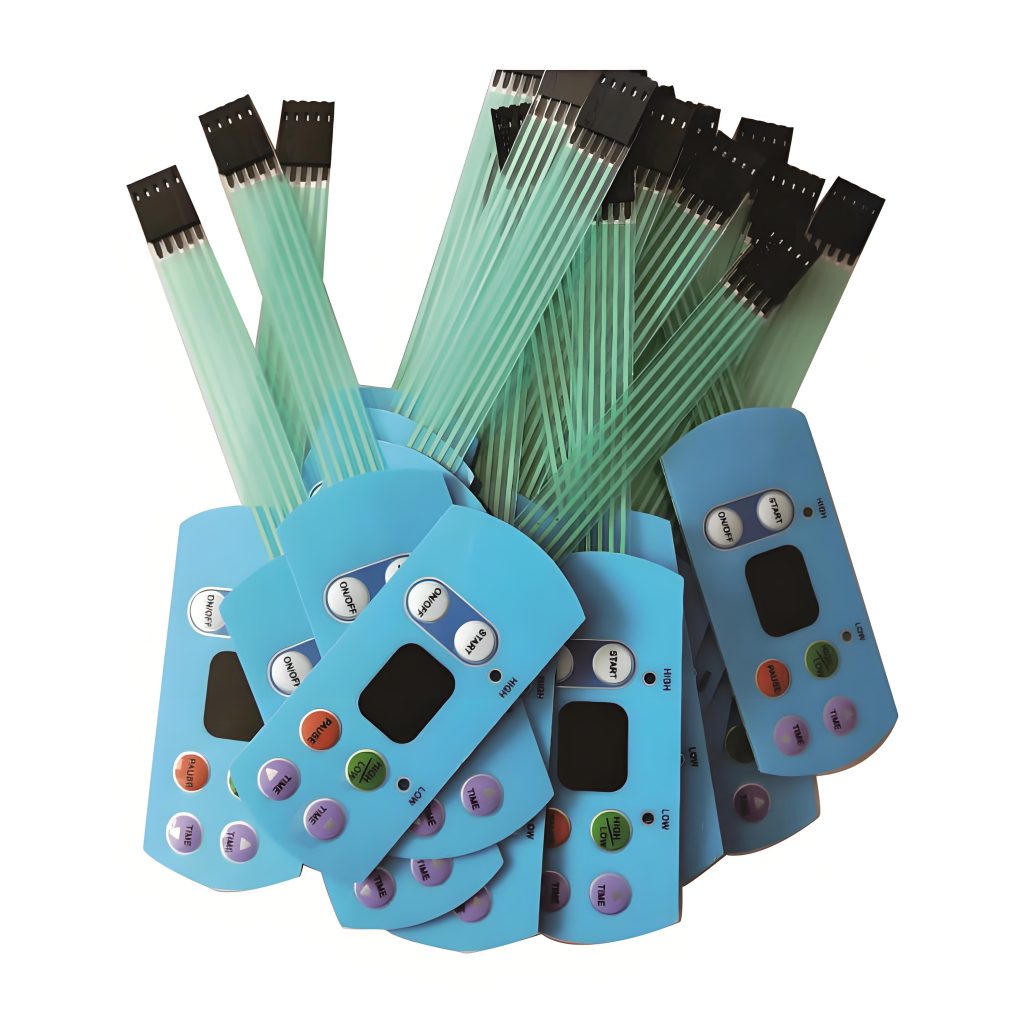
What is a tactile membrane switch?
What is a tactile membrane switch?
What is a tactile membrane switch? A tactile membrane switch is an electronic switch that combines membrane switch technology with tactile feedback. Similar to traditional membrane switches, it is composed of multiple layers of membrane material. It usually includes a panel layer, an upper circuit layer, an isolation layer, and a lower circuit layer. In order to provide tactile feedback to the user, tactile feedback elements are usually integrated into tactile membrane switches.
Yu An Electronics is dedicated to the production of different types of membrane switches. It has over 18 years of production experience and professional production personnel and technology to provide you with the most satisfactory products.
What is a tactile switch?
A tactile switch is a switch that completes or breaks a circuit by manual operation, and is commonly used in devices such as keyboards and keypads.

Originally available as membrane or screen-printed switches, tactile switches were not widely adopted initially due to poor performance and lack of tactile feedback. However, versions that incorporate metal domes into the design have gained wider adoption with improved feedback, robust actuation, and longer service life.
Are membrane switches tactile?
Membrane tactile switches usually have tactile feedback. Membrane switches can be designed to provide different tactile feedback as needed.
- Tactile type: This type of membrane switch has no tactile feel and has a longer service life.
- Film convex touch type: This type of membrane switch has a good touch, but a short service life.
- Convex frame non-touch type: This type of membrane switch has a beautiful appearance and a strong three-dimensional sense, but it has no touch as a whole.
- Convex frame touch type: This type of membrane switch has a beautiful appearance, a good touch, and a strong three-dimensional sense.
In addition, the working principle of the membrane switch is to connect through the metal points on the conductive film. When the key is pressed by external force, the center point of the contact is concave, contacting the circuit on the PCB, forming a loop, and the current passes through, so that the entire product can work normally. This design enables the membrane switch to provide certain tactile feedback during operation.
What is a membrane switch used for?
The membrane switch is an operating system that integrates key functions, indicator elements, and instrument panels. It is widely used in the operating interface of electronic products. Its main uses and functions include:

- Easy to operate: The membrane switch deforms the contact when pressed and the contact rebounds and disconnects after release, realizing signal triggering, which is simple and convenient to operate.
- Waterproof, dustproof, and oilproof: membrane switches have good waterproof, dustproof, and oilproof properties, and are suitable for various harsh environments.
- Stable and reliable performance: membrane switches have a rigorous structure, stable and reliable performance, long service life, and are suitable for long-term use.
- Beautiful and elegant: membrane switches have beautiful appearance, rich colors, and the panel can be washed without damage to the characters, which is suitable for the appearance design requirements of various electronic products.
- Wide application: membrane switches are widely used in electronic communications, industrial control, medical equipment, automotive industry, smart toys, household appliances and other fields.
Are membrane switches good?
Membrane switches have many advantages, which make them widely used in many fields.
First of all, the structure design of membrane tactile switch is reasonable, and they are light, durable, and have good sealing properties. They are light in weight, small in size, easy to carry and disassemble, and suitable for the needs of various electronic devices. The membrane switch has excellent sealing performance, which can effectively prevent interference from external factors such as moisture, dust, and oil, and is suitable for various harsh environments.
Secondly, membrane switches have a long service life and a relatively low price. Due to their good heat resistance and folding resistance, the service life of membrane switches can generally reach more than one million times, or even longer. In addition, the price of some membrane switches is very low, some are only a few cents, which makes it have significant advantages in cost control.

The installation and maintenance of membrane switches are also relatively simple. Most of them are installed by sticking. You only need to peel off the adhesive paper to firmly stick it on the surface of the whole machine. The lead outlet can be inserted into the socket of the rear circuit of the whole machine to connect the circuit, saving labor and materials, and reducing the supporting cost of the whole machine.
How does a tactile switch work?
Tactile membrane switches usually use metal shrapnel buttons. When the button is pressed, the shrapnel deforms and its center point is concave, so that the shrapnel contacts the conductive circuit or contact below to form a loop, so that the current can pass and the circuit is turned on.
The metal shrapnel has a certain elasticity. During the process of pressing and releasing, its deformation and restoration will give the fingers a clear tactile feeling, imitating the feeling of pressing a physical button, allowing users to intuitively confirm the key operation.
Where are tactile switches used?
- Industrial equipment: Because of its good sealing, durability and ability to adapt to harsh environments, it is often used in industrial control panels, machine tool operation panels, control terminals of automated production lines, etc. It can work stably in complex industrial environments and achieve precise control of equipment.
- Medical instruments: The control panels of equipment such as medical monitors, infusion pumps, and electronic blood pressure monitors, whose tactile feedback allows medical staff to more accurately perceive the key status during operation to avoid misoperation. At the same time, the waterproof and dustproof properties of membrane switches also help to keep the equipment clean and hygienic, ensuring the normal operation and safety of medical equipment.
- Consumer electronics: In some small consumer electronic products, such as portable audio, e-book readers, and handheld game consoles, tactile membrane switches can achieve the control of multiple functions in a limited space, and their appearance can be customized according to product design to meet different aesthetic needs.
- Automotive interiors: Tactile membrane switches are often used in the center console, instrument panel, door control panel, etc. of the car to control functions such as window lifting, rearview mirror adjustment, and interior lighting. Its soft touch and good appearance coordination can enhance the overall texture and user experience in the car.
- Smart home devices: such as control panels of smart home appliances, switches of smart lighting systems, etc., tactile membrane switches can achieve simple and beautiful designs, while providing clear tactile feedback, making it convenient for users to control smart home devices.
In short, as an electronic switch that combines membrane switch technology and tactile feedback function, tactile membrane switches are light and portable, simple and intuitive to operate, waterproof and dustproof, highly customizable, and low cost. It has broad application prospects in consumer electronics, medical equipment, industrial control, automotive electronics and other fields.

Know the Difference between Tactile and Non-Tactile Membrane Switching
When selecting the appropriate interface for a product, it can be wise to understand the differences between tactile and non-tactile membrane switches so that the engineer and the purchaser make a better decision. They are both very common in medical equipment, domestic appliances, and industrial equipment, though they do not present the same user experience. ...

Step-by-Step Guide to Selecting the Right Membrane Switch for Your Product
It is not easy to choose the appropriate interface for an electronic device with the number of various types of membrane switches. This is a basic, stepwise analysis to help product designers and manufacturers select the optimal choice. Step 1: Determine your Application Requirements Begin by making a list of locations where switches are used, ...

Top Membrane Switches for Home Electronics Projects in 2025
You can elevate your home electronic membrane switch project in 2025 with standout models such as the 4×4 Matrix 12 Keys Keypad from SOUSHINE, the rgb-enabled strip switches from Molex, and custom graphic switches by Panasonic. These switches offer slim profiles and reliable performance, making them easy to integrate into your DIY setup. You gain ...
Contact us online